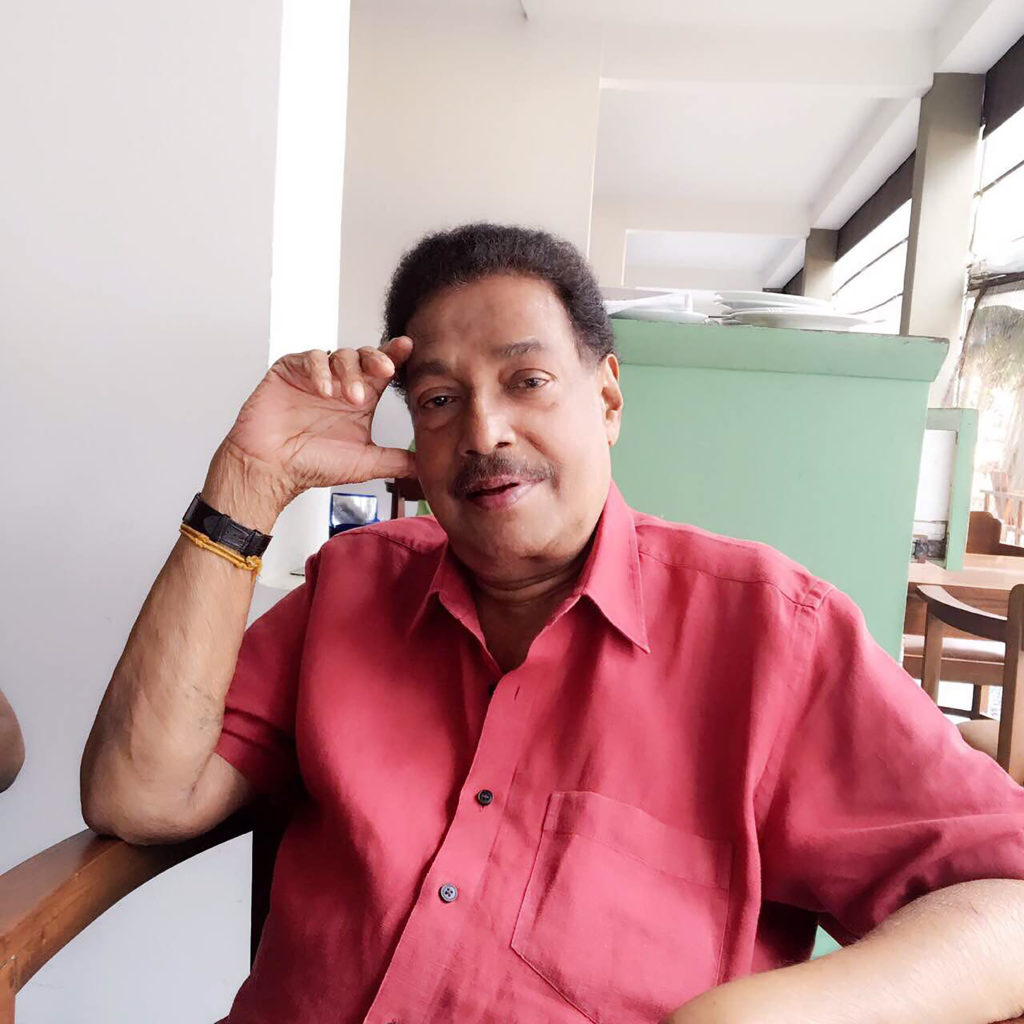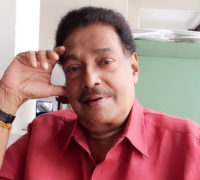
When it comes to the Batik Industry, Buddhi Batiks had always been a household name. By becoming one of Sri Lanka’s leading Batik designers, Buddhi Batiks have been recognized for its quality, creativity, and the wide diversity of designs, patterns, thus creating its own identity in the field of fashion designing. Being the main inspiration in turning Buddhi Batiks into a household name, Deshabandhu Dr. Buddhi Keerthisena recollected the beginning of the Batik Industry in Sri Lanka as well as Buddhi Batiks, recalling an interesting journey towards the early years of Batik, gradually developing up to the international standard where it is now.
“When Buddhi Batiks were first established in the 1960’s, Batik was only a decorative item and was limited only for Sarongs, shirts, kaftans and Kurtas” said Dr. Keerthisena, founder and the brainwave behind Buddhi Batiks. “Actually, there was no fashion but there were dresses made out of Batik. Wall hangings were popular, and Batik was first started in Sri Lanka by Soma Udabage, and at that time, it was a new thing in the beginning of 1960’s. Afterwards, Vipula Dharmawardene, Ena Desilva, myself, Bandula Fernando, Douglas Fernando, Eric Suriyasena, we all came at the latter part of the 1960’s. But even at that time, there was no real fashion in Batik. We went all over the world, especially trade fairs. We participated in many trade fairs in the 1970’s. Vipula Dharmawardene and I did Batik exhibitions all over the world. At trade fairs, we got huge orders for supplying of Batik, including wall hangings, dresses, etc. But still there was no proper fashion”. Continued Dr. Keerthisena.
Vipula Dharmawardene devoted most of his time to promote Batik abroad, and gained huge success through his effort in promoting the material. Dr. Keerthisena also participated in Frankfurt, Berlin, and Dusseldorf fashion fairs, as well as those held in Brussels, Sweden, Austria, Netherlands, Denmark, Norway, and many others, taking Batik all across the globe. During this period, they were able to bring back a lot of foreign exchange to the country, which was during the 1970’s. From the 1970s to mid 80’s, it was a very successful industry. But however much it became popular, still there was no proper fashion.
“My daughter, Darshi, started working at my workshop when she was very small.” Dr. Keerthisena reflected of the fond memories of the beginning of Buddhi Batiks. “Both my workshop and the house were together, so she obviously started associating with Batik. She started doing her own Batik. When she was five years, she started making Batik dresses and scarf’s for her dolls. Then she started making different things. Every day she goes to the workshop, to do some work on her own, and even without our knowledge, she started working on Batik”. Said Dr. Keerthisena, indicating the key reason that laid Darshi’s foundation for success in the Batik Industry, Developing Buddhi Batiks into one of the most sought after fashion labels in the country.
When Darshi grew up, she wanted to become a fashion designer and she started her career by joining the De La Salle University, after her A/L’s, ignoring her chance to enter the University of Colombo, since she did not find what she wanted there-fashion. She obtained a diploma from there and went to UK to do her Honors degree in Fashion Designing. Batik was considered as an artistic line, but now it has turned into a profitable business. Darshi came back from England, while having the opportunity to continue as a fashion designer there, she joined Brandix and worked there for 5 years. Afterwards she joined Buddhi Batiks, her family business. While she was working at Brandix, she had the feeling that there should be a change in the Batik industry in Sri Lanka.
“In 1983, there was a decline of the demand for Batik in the international market as well as the local market. There was a very big tourism market in Sri Lanka in 1983, and there was a big demand from tourists for our Batiks. But in 1983, during the ethnic violence in Sri Lanka, Tourism dropped to zero, and the export level was also curtailed. The Batik industry nearly came to an end during that time, but with my efforts, I started converting it to a local demanding market. I got a market survey done to find out what was the main issue for the decline since there were no tourist sales, and I had 350 workers in my workshop, unable to do anything since there was no money to pay followed by a lot of problems. So I got a market survey done to find out what was suitable for Sri Lanka. We found Batik shirts and specially sarongs, Batik sarees and Kandyan sarees in demand. So we started making them, and I got my friends from the cinema industry to support us”. He continued.
Dr. Keerthisena’s efforts to liven up the Batik industry proved to be fruitful, after including well known celebrities to cooperate and encouraging Sri Lankans to wear Batik again. Thus, well known icons in the cinema industry started wearing Batik to promote the industry once again to its former prestige. “Vijaya Kumaratunga, Sriyani Amarasena, Jeevan Kumaratunga, Ranjan Ramanayake, Malani Fonseka, Lucky Dias, Raveendra Randeniya, Sabeetha Perera, Sanath Gunathillake, all these celebrities started wearing Batiks which I specially designed for them. Support from the media was also was a big success, by taking photographs and publishing, doing commercials and advertisements, and so on. Everything was done free of charge, since this was for a good cause. Everybody was talking about Batik all of a sudden, and celebrities, important and high profile people in society started wearing Batik at parties, including specially designed sarongs and kurthas. A most special person to do so was late Vijaya Kumaratunga. People started talking about it again and the market also gradually developed. I could not supply, but the others in the Batik Industry benefitted through my publicity campaign, thus the once declined Batik industry came back. The lost revenue, demand for the Batik industry came back through this programme.”
But apart from this success, obstacles began arising again. The Batik industry again had to go through it’s hardships with the smaller scale vendors specially in the Pettah market selling the material for a much lesser price and was of poor quality.
“There was a demand, but unfortunately it was going to the hands of the Pettah traders. It again became a bad time for the Batik Industry because they produced very low quality Batiks through the small shops around the country, which they sold at a low price. By doing that, again the demand for Batik was declined. A lot of people left the Batik industry, not being able to survive. Vipula Dharmawardene passed away, and many people who were in the Batik industry gave up. But I was continuing, in a smaller way.”
It was then Darshi came back and revamped the whole thing into a new line. She wanted to give an identity for the real Sri Lankan Batik. Having an Honors degree in Fashion Designing, she took over Buddhi Batiks and became the Director, Design. Finally now it has become a household word, and then again it has become a high up market product with sustainable investment for the village community and enhancing their livelihood.
According to Dr. Keerthisena, Batik is teamwork. There’s a designer, there’s a person who decides the colours, but still, you need skilled artisans for this type of work. Artisans are the people who are really working in the production side. They are the manpower behind the scene. So with all this teamwork, Darshi is heading Buddhi Batiks. She’s the designer, consultant, advisor, promoter, all in one. Everything is done by her, and with her innovative thinking, theres a group of artisans using their skills converting a raw cloth into Batik, which has created wonders with its wide range of colours, designs and styles to choose from.
“After Darshi revamped the whole thing, those who left the industry also came back and started Batik again. Some of them even started copying Darshi’s designs, but Darshi was not angry or unhappy about it. She merely said “let the industry grow”. Today, you can market Batik from any angle-wedding sarees can be made, and you can market it for $150, 000 a saree. You can start from Rs.60, 000 to Rs.150, 000 a saree. That is where Darshi has brought the industry now. Her thinking is Batik, but Sri Lankan. Design, Sri Lankan. Promotion, Sri Lankan, but fashion, international. That is what I see in her. But she may have a different way of thinking” Dr. Keerthisena further expressed. With all her hard work after coming back to Sri Lanka, she has brought the Batik industry to an international fame. Marketing aspects, design aspects, the recognition, all has gone to international level also benefitting the people who are in the industry. “He further added. Established as the brainchild of Deshabandhu Dr. Buddhi Keerthisena, and further developed into a leading fashion label both locally and internationally with Darshi’s creativity and expertise in the industry, , the success of Buddhi Batiks is simply an example of sheer commitment, dedication and teamwork, proving that anything is possible, and face challenges if it needs to be.
By Sureshni Pilapitiya
